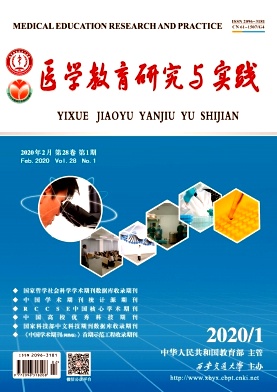
期刊简介
《医学教育研究与实践》 (ISSN 2096-3181 CN61-1507/G4)(原名《西北医学教育》 (ISSN 1006-2769 CN 61-1257/G4)是我国最早创办的医学教育类学术期刊之一,创办于1982年,1993年开始在全国范围内公开发行( 邮发代号 52-133)。多年来,该期刊的办刊人员一直坚持“立足国内,放眼全球”的办刊理念,及时“捕捉”我国乃至全球最新的医学教育研究成果,该期刊也为我国各医学院校及其附属医院、教学医院的广大教师、医学研究生、医学教育研究人员、教育教学管理人员等进行医学教育学术研讨、展示其最新医学教育改革成果、交流其医学教育教学经验等提供了一个很好的平台。目前,该期刊的读者、作者群遍及我国各省、市、自治区,甚至港、台地区及国外,是其进行医学教育、教学实践的参考和良师益友。本刊发表的学术论文基本上代表了中国乃至世界各国当前医学教育领域的最新、最全面的理论成果,也是相关学者研究中国医学教育现状、推动医学教育改革的参考工具之一。 办刊宗旨:坚持正确的办刊方向,报道国内外医学教育动态,反映医学教育理论、医学教育方法和技术以及教学管理成果等,展示教育改革成果,交流优秀教学经验,服务我国医学教育教学实践。
如何撰写论文的讨论和结论部分,以提升SCI审稿通过率300%?(附例句模板)
时间:2024-07-15 11:13:54
SCI论文中的讨论部分该怎么写?
确实,要写好讨论部分并非易事。它需要你将研究结果与已知文献结论进行深入的对比分析,这无疑需要丰富的知识积累。讨论部分的真正目的,是通过这种对比分析,凸显你的研究的创新性和合理性。
在正式撰写讨论之前,你可以问自己以下6个问题,以确保逻辑自洽,讨论的全面深入:
我的假设是正确的吗?
如果我的假设只是部分正确,或者与已发表的文献结论完全不同,那么从我的结果中实际能推断出什么结论?
先前的研究对该主题已有哪些发现?我的结论如何改变或补充了该领域的现有知识?
为什么我的结果对该领域很重要?这些结果是否为科学共识增添了新的证据,或者反驳了先前的研究?
在我的研究基础上,未来的研究将如何进行?哪些关键实验是必须要进行的?
你最希望给读者留下哪个结论点的深刻印象?
关于讨论部分的框架结构:
通常,首段会再次总结论文的主要结果,并强调其意义。紧接着的2-5段,会结合已知文献逐一讨论对比每个结果,无论是相似还是相反,都会分析其原因。最后,会讨论本研究的局限性和优势。而在结论(Conclusion)部分,会再次总结本研究的主要贡献及意义。
讨论部分容易犯的错误有以下四点:
引入结果部分没有提到的新结论或证据。记住,讨论部分提到的所有结果必须在“结果(Results)”部分已经呈现过,不能在讨论部分引入新的结论。
对局限性或负面结果避而不谈。局限性和负面结果能让读者了解你的研究课题的全貌,是对你论文结果未涉及部分或不完美部分的有益补充,审稿人也会很关注这部分内容。
“局限性(Limitations)”部分的撰写推翻了你的方法或结果部分的陈述。即使你的研究存在重大局限性,也不能以己之矛攻己之盾,推翻你自己的结果,否则论文将很难站得住脚。
夸大你的研究的重要性。对于你的研究如何充分解决重大问题做出过于宏大的陈述,会引起审稿人和读者的质疑。毕竟学术研究还是更提倡实事求是,有凭有据。
以下是一些讨论部分的例句模板:
总结本研究结果:
This study has identified …
The research has also shown that …
These experiments confirmed that …
This study has found that generally …
The investigation of X has shown that …
和以往研究进行对比分析:
支持过往研究结果:
This study confirms that X is associated with …
This finding is consistent with that of Smith (2000) who …
Comparison of the findings with those of other studies confirms …
This also accords with our earlier observations, which showed that …
These results corroborate the findings of a great deal of the previous work in …
In accordance with the present results, previous studies have demonstrated that …
Consistent with the literature, this research found that participants who reported using X also …
和过往研究结果相反:
This study has been unable to demonstrate that …
However, this result has not previously been described.
This outcome is contrary to that of Smith et al. (2001) who found …
This finding is contrary to previous studies which have suggested that …
In contrast to earlier findings, however, no evidence of X was detected.
The yields in this investigation were higher compared to those of other studies.
However, the findings of the current study do not support the previous research.
讨论本研究的局限性:
This current study is limited by the absence of …/the possible effect of …/the fact that it only surveyed …/by the fact that it was restricted to …
The most important limitation lies in the fact that …
The main weakness of this study was the paucity of …
未来研究展望:
A further study with more focus on X is therefore suggested.
There is abundant room for further progress in determining …
Future studies on the current topic are therefore recommended.
Further work is needed to develop reliable analytical methods for …
To develop a full picture of X, additional studies will be needed that …
In future investigations, it might be possible to use a different X in which …
